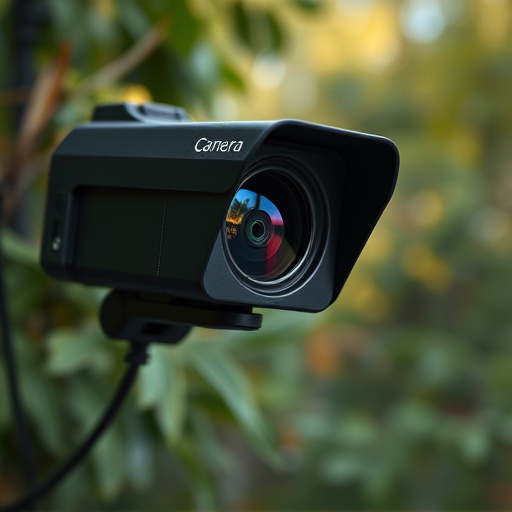The implementation of a Nanny Cam with Sound Recording raises legal issues concerning privacy and consent, with regulations varying by region. Legality requires adhering to specific rules, including obtaining permission from all involved parties. These cameras, powerful tools for monitoring, necessitate ethical considerations, such as respect for privacy rights and transparent usage. Best practices include installing cameras in well-lit areas, securing recordings, and understanding local laws. Homeowners should be vigilant against hidden audio devices through regular inspections and proactive security measures like motion-activated lighting and encrypted networks to prevent covert surveillance.
Uncover the art of identifying covert recording spots with our comprehensive guide. In today’s digital age, understanding the legal implications of a ‘Nanny Cam With Sound Recording’ is paramount. This article explores the techniques and tools for detecting hidden audio devices, offering insights into ethical installation practices and practical tips for homeowners. From legal perspectives to practical prevention strategies, we demystify the process, ensuring you’re informed about both the technology and its responsible use.
- Understanding Nanny Cam with Sound Recording: A Legal Perspective
- Identifying Covert Recording Spots: Techniques and Tools
- Ethical Considerations and Best Practices for Installation
- Detecting and Preventing Hidden Audio Devices: Tips for Homeowners
Understanding Nanny Cam with Sound Recording: A Legal Perspective
The use of a Nanny Cam with Sound Recording raises significant legal considerations, especially regarding privacy and consent. In many jurisdictions, capturing audio in private spaces without explicit permission is deemed illegal, as it infringes on an individual’s right to privacy. However, exceptions exist for certain situations, such as in the context of child care or monitoring elderly relatives, where a Nanny Cam with Sound Recording can serve as a valuable tool for ensuring safety and well-being.
From a legal perspective, it is crucial to understand that audio recording must comply with specific regulations. This includes obtaining consent from all parties involved—the caregiver, the homeowner, and potentially the individuals being recorded. Furthermore, the recordings should only be used for their intended purpose and stored securely to prevent unauthorized access or distribution, ensuring compliance with data protection laws.
Identifying Covert Recording Spots: Techniques and Tools
Identifying covert recording spots, often referred to as hidden cameras with sound recording capabilities, requires a blend of technical expertise and keen observation. One of the primary tools in this quest is the nanny cam with sound recording functionality. These tiny yet powerful devices are designed to be discrete, making them ideal for unearthing secret audio recordings in various settings. By strategically placing these cameras in places like offices, homes, or public spaces, investigators can gather evidence of covert listening devices, ensuring privacy and security.
Advanced tools such as EMF (ElectroMagnetic Field) detectors also play a crucial role in this process. These devices help identify unusual electromagnetic signals that might indicate the presence of hidden recording equipment. Additionally, thermal imaging cameras can reveal temperature anomalies, pointing to potential hidden cameras or wires. With these techniques combined, professionals can navigate complex scenarios, ensuring they are well-equipped to uncover covert recording spots and protect individuals from privacy breaches.
Ethical Considerations and Best Practices for Installation
When setting up a covert recording system, such as a nanny cam with sound recording, ethical considerations are paramount. It’s crucial to respect privacy rights and ensure any recordings are used for legitimate reasons, like child or property safety. Unethical installation can lead to severe legal repercussions and damage trust. Always obtain consent from all parties involved, especially in shared spaces, and inform them of the existence of the camera. Transparency is key; hiding a recording device without disclosure may be deemed invasive and illegal.
Best practices for installation include placing cameras in well-lit areas, ensuring clear views, and avoiding angles that invade personal spaces or record through curtains or other obstacles. Keep recordings secure and encrypted to prevent unauthorized access. Regularly review and delete outdated footage to maintain data integrity and privacy. It’s also important to understand local laws regarding surveillance and recording, as regulations can vary significantly by region. Adhering to these guidelines ensures a balance between security measures and respect for individual privacy.
Detecting and Preventing Hidden Audio Devices: Tips for Homeowners
Many homeowners are unaware that their privacy could be at risk from hidden audio devices, such as a nanny cam with sound recording capabilities. These tiny yet powerful tools can be easily concealed and used to record conversations or monitor activities without consent. Detecting these devices is crucial for maintaining personal space and security. Homeowners should look out for unusual electrical outlets or cables that might suggest the presence of hidden cameras or microphones. Regularly checking utility rooms, attics, and basements where such devices could be installed is a good practice.
Preventive measures include installing motion-activated lights in areas with limited visibility to deter potential intruders from setting up covert recording devices. Additionally, keeping electronics, like TVs and computers, updated with the latest security patches can help secure your home network from unauthorized access. Using encrypted Wi-Fi networks and changing default passwords on all smart home devices are further steps to protect against hidden audio surveillance.
The covert recording spot identification methods outlined in this guide, focusing on techniques like Nanny Cam with sound recording, offer a comprehensive toolkit for both legal professionals and homeowners. By understanding the latest tools and ethical best practices, we can ensure privacy protection while navigating the legal landscape of hidden audio devices. Armed with knowledge, we’re better equipped to detect and prevent these devices, fostering safe and trustworthy environments.
